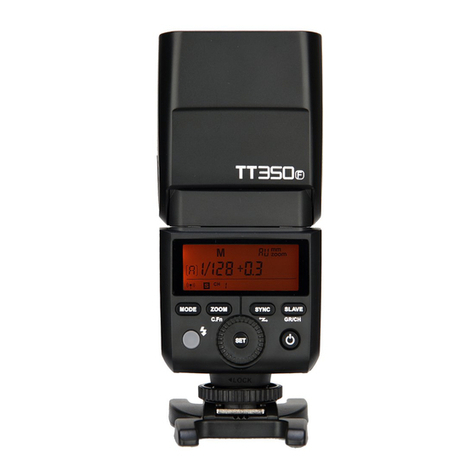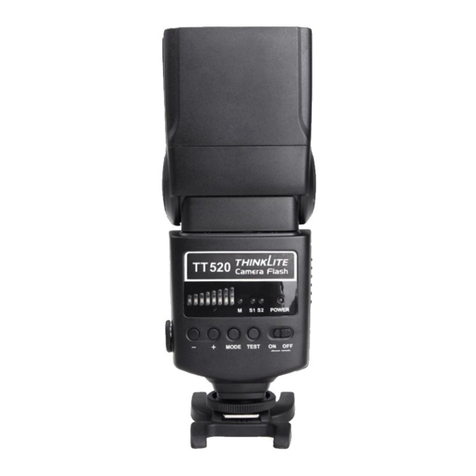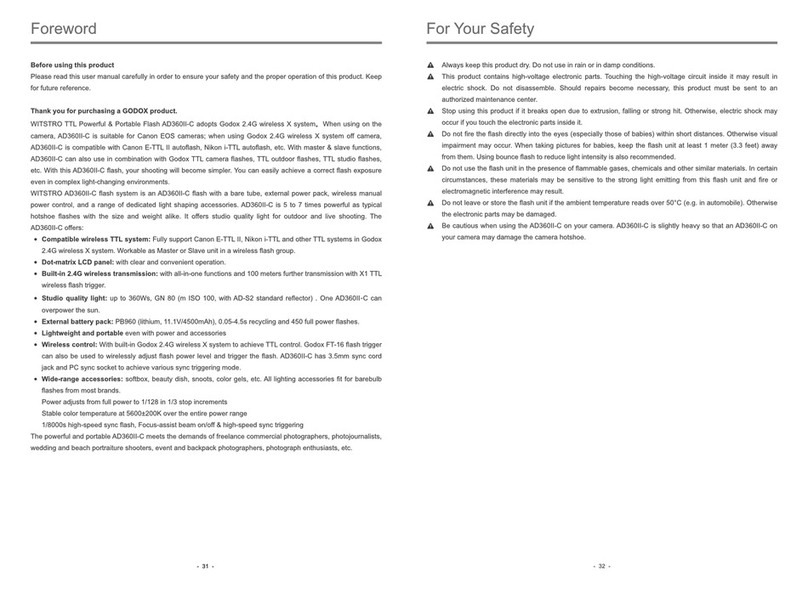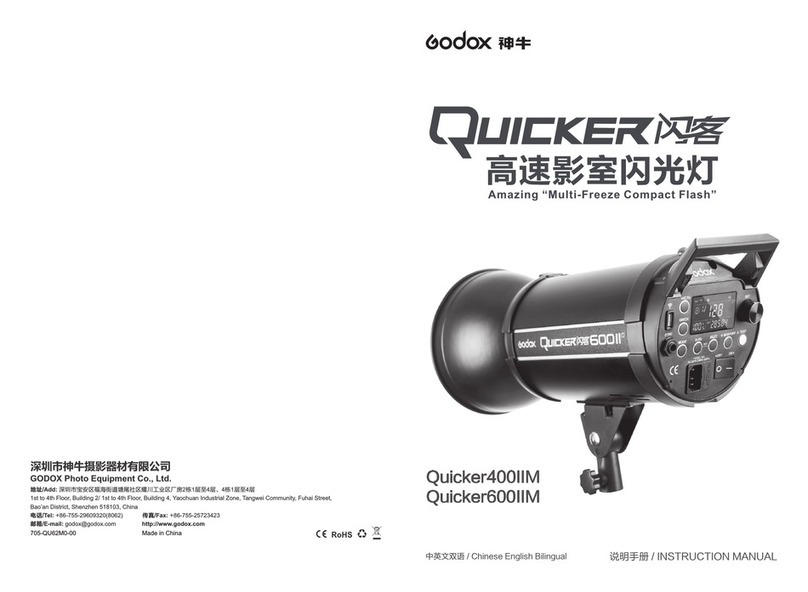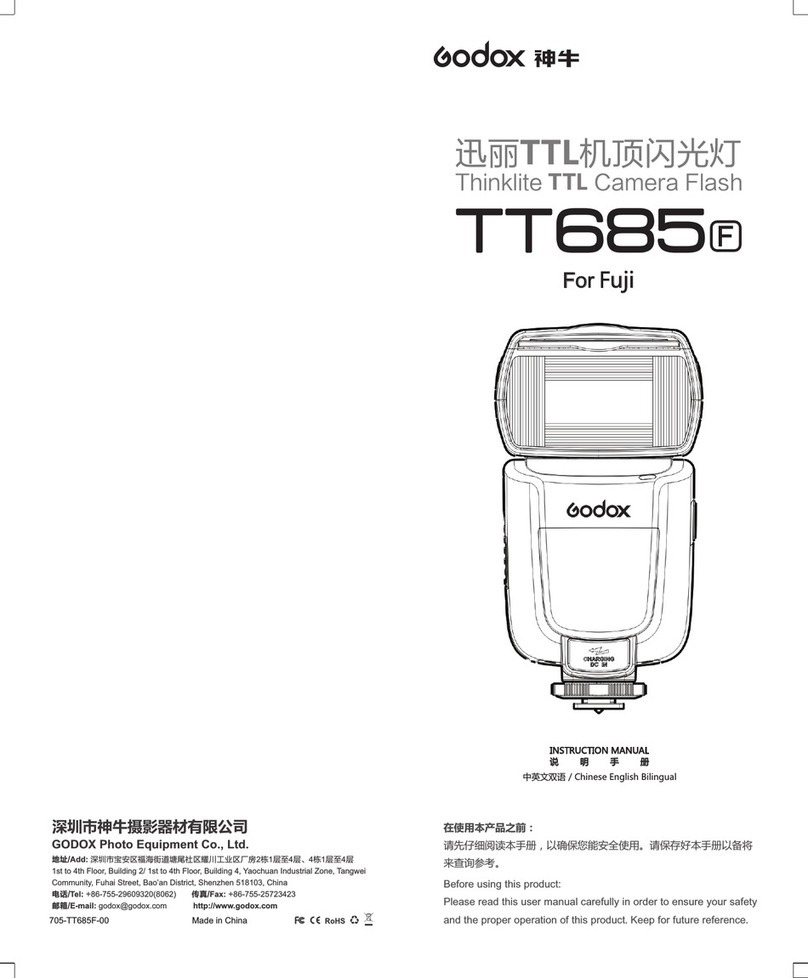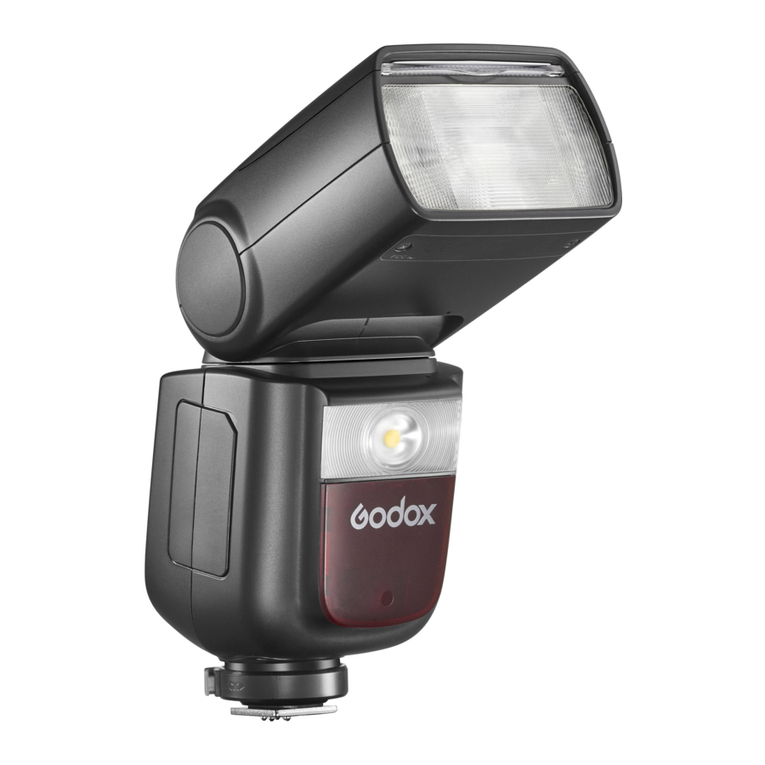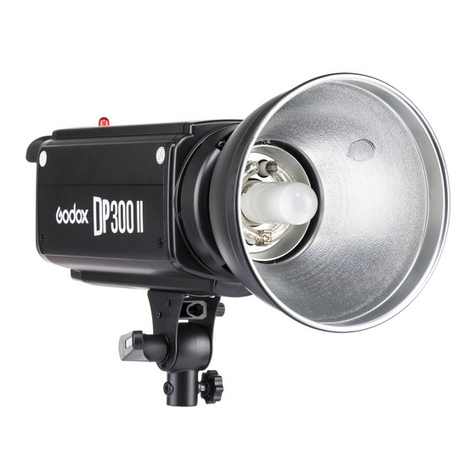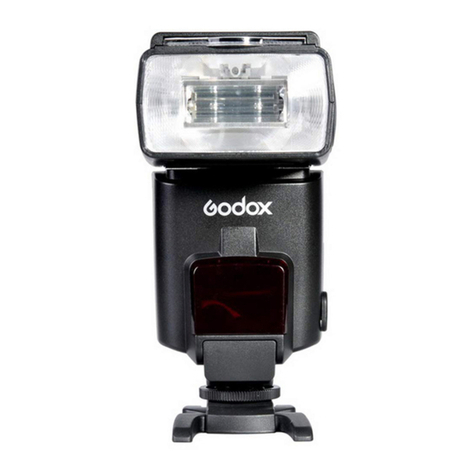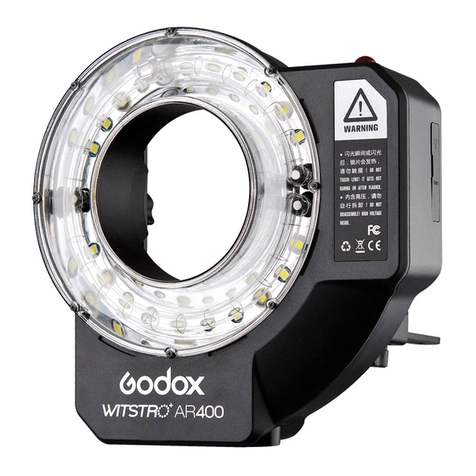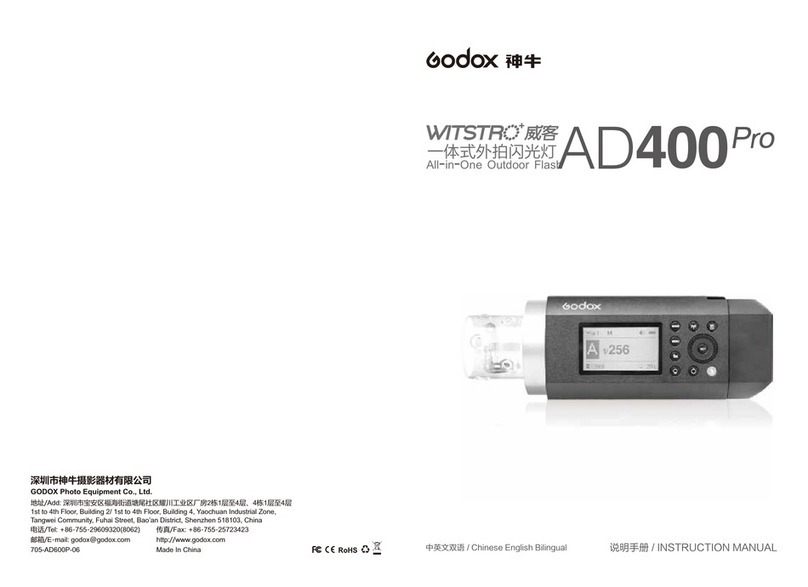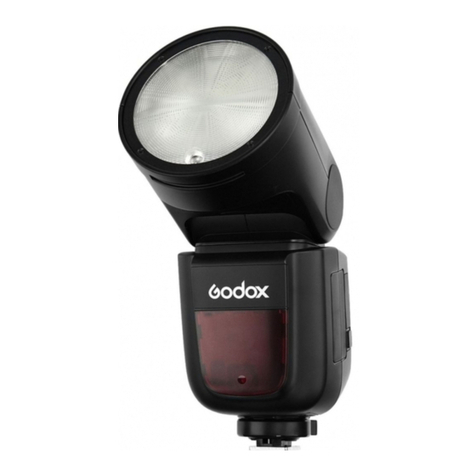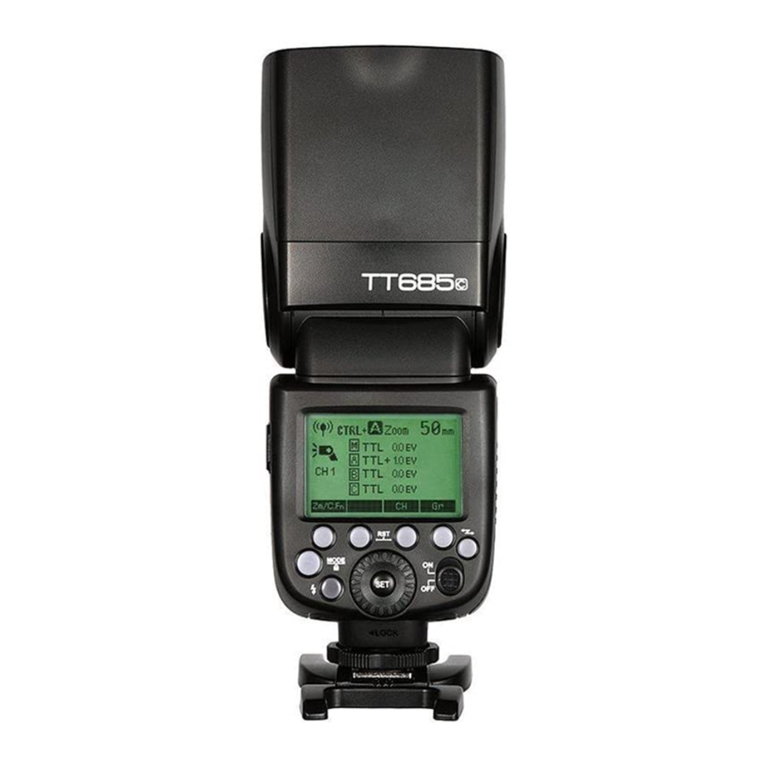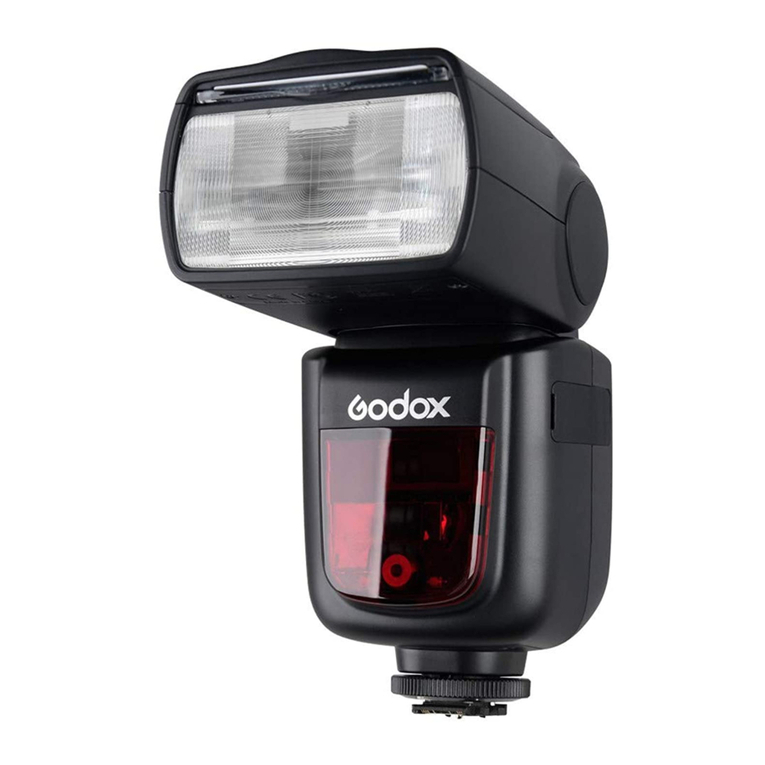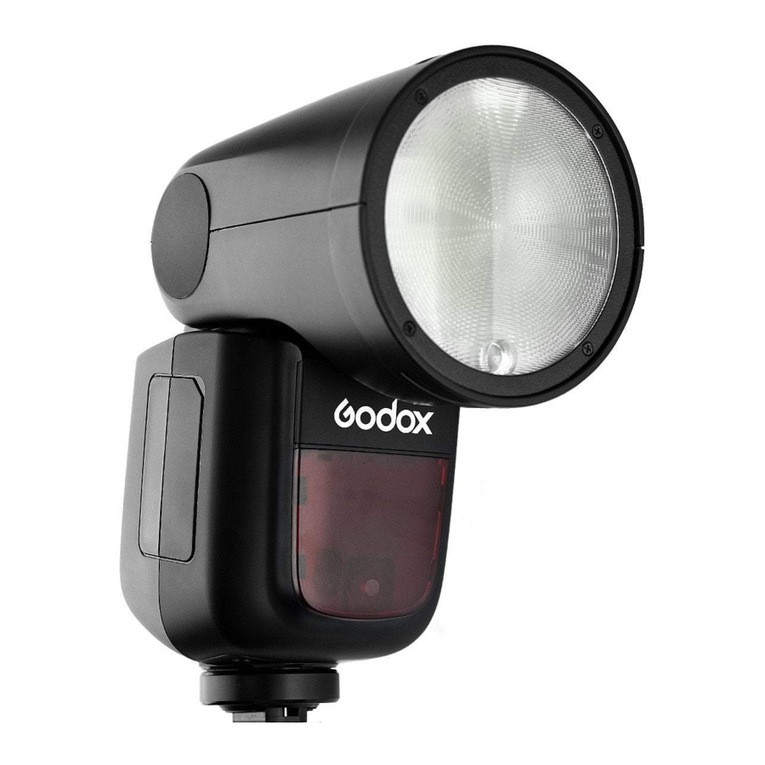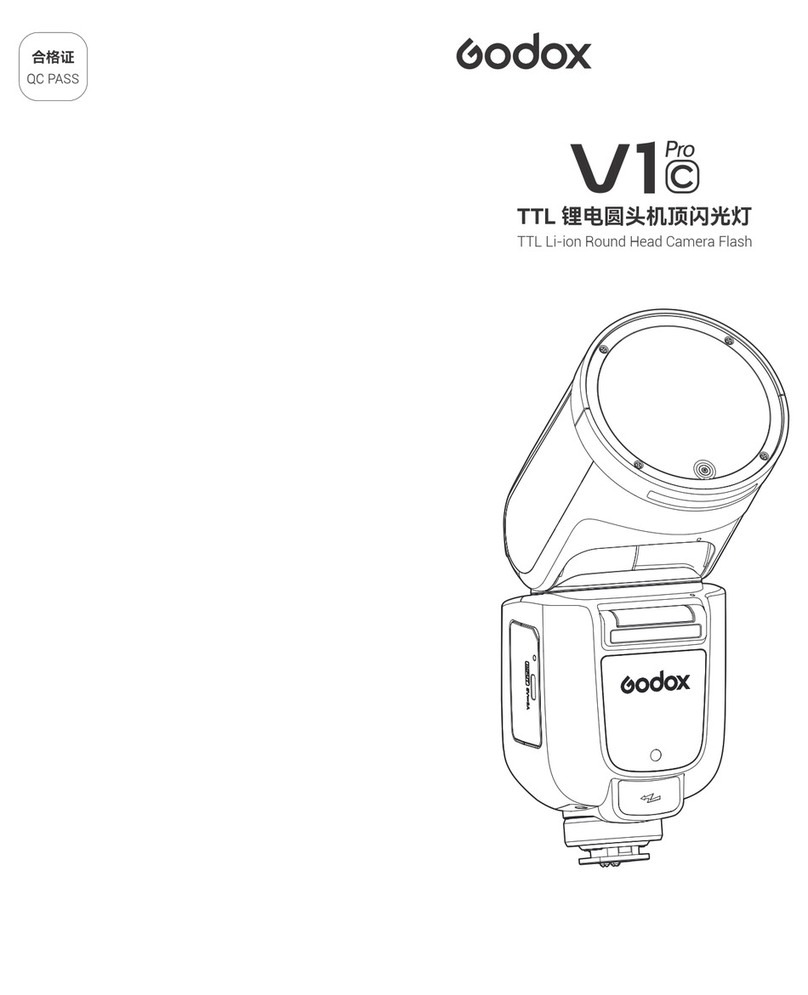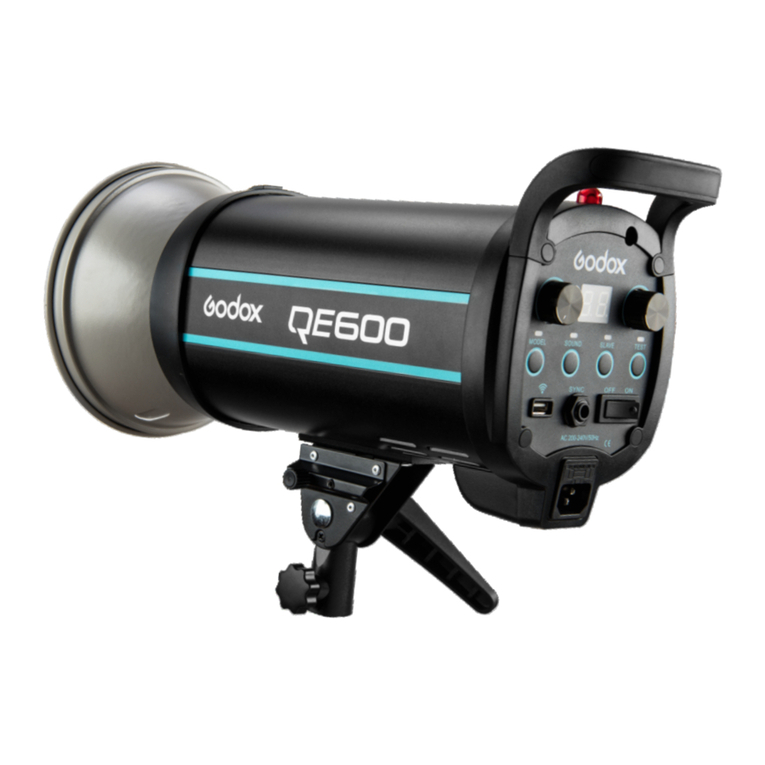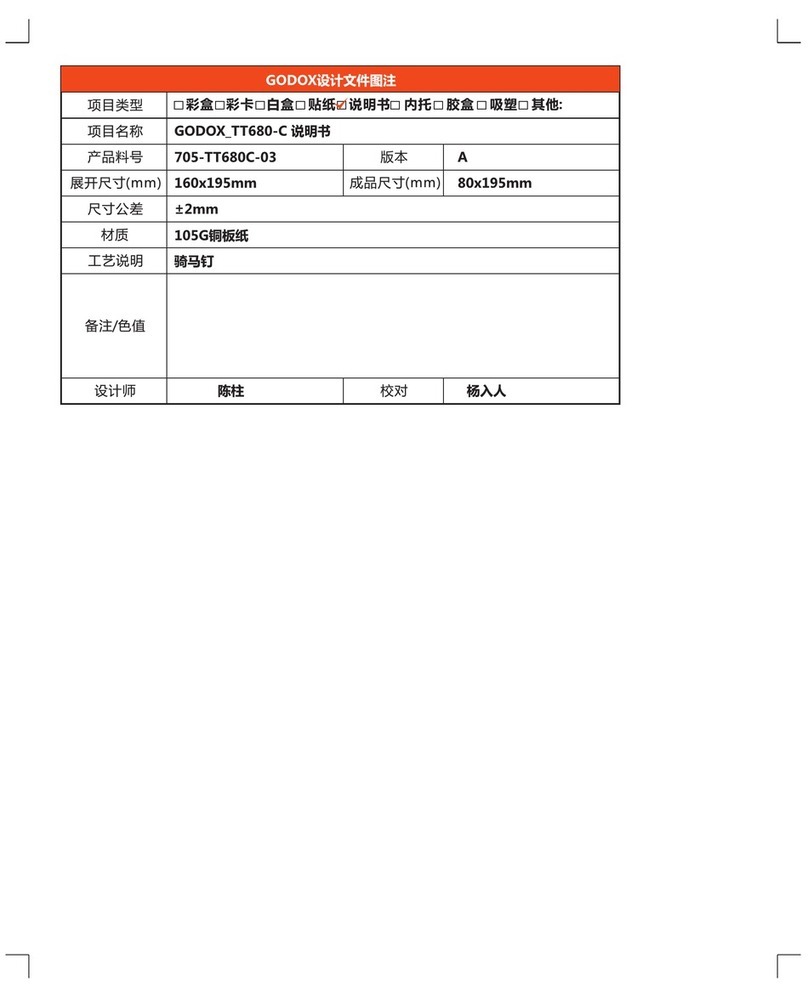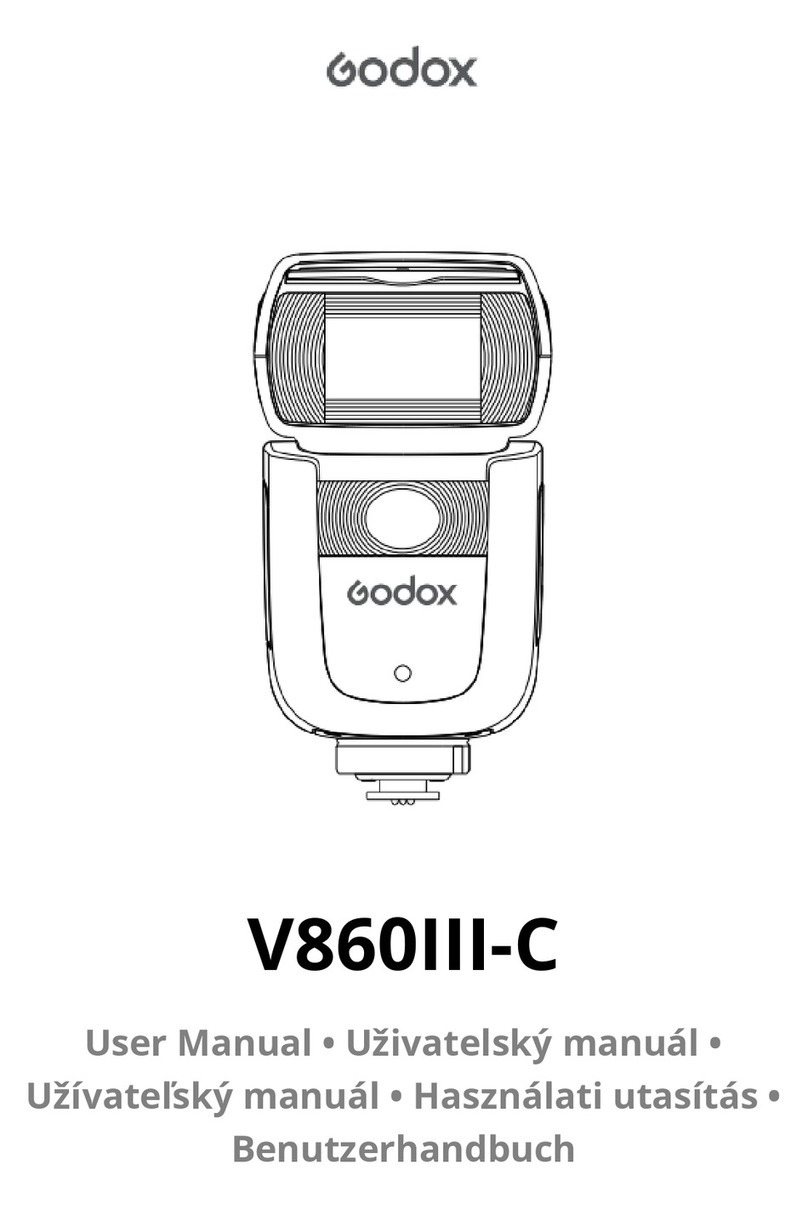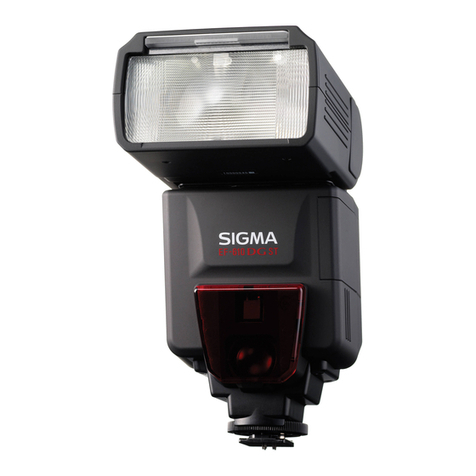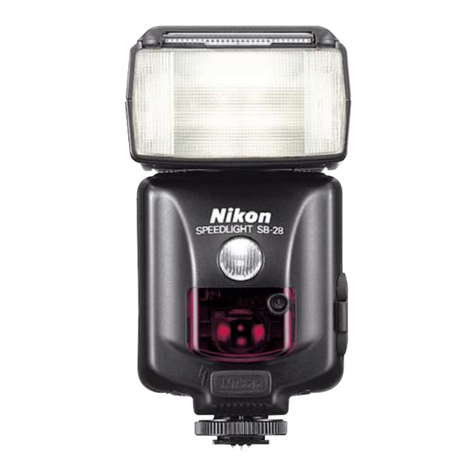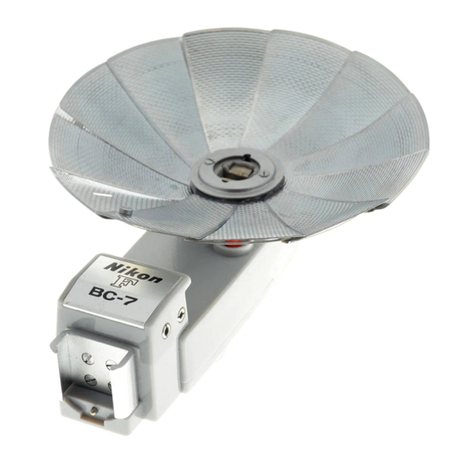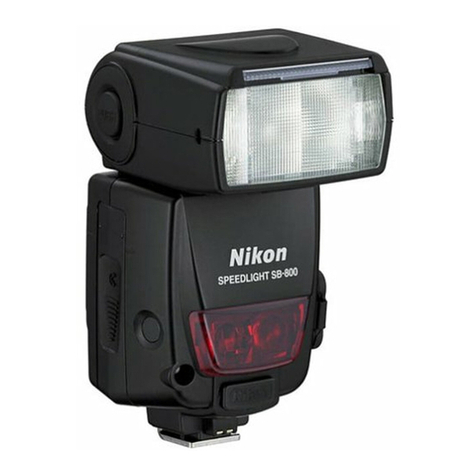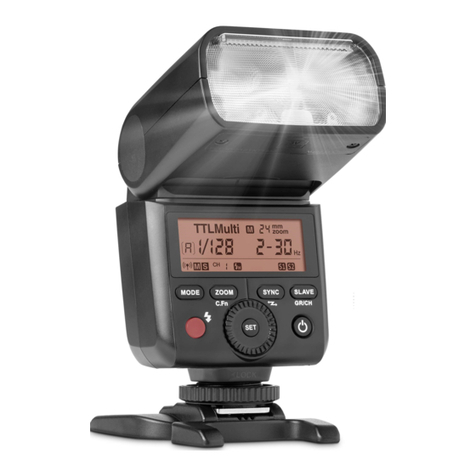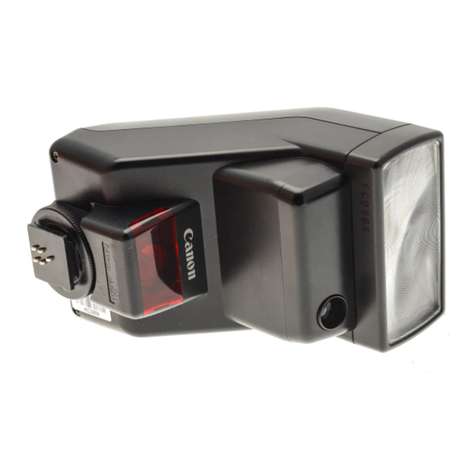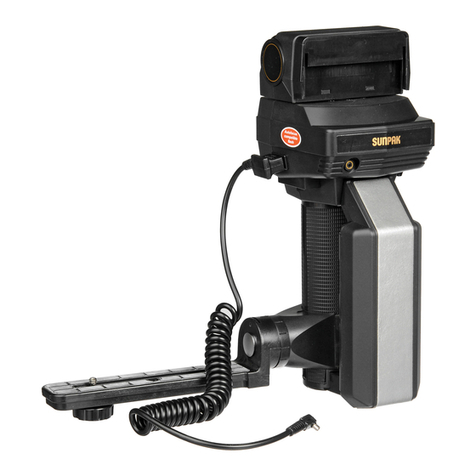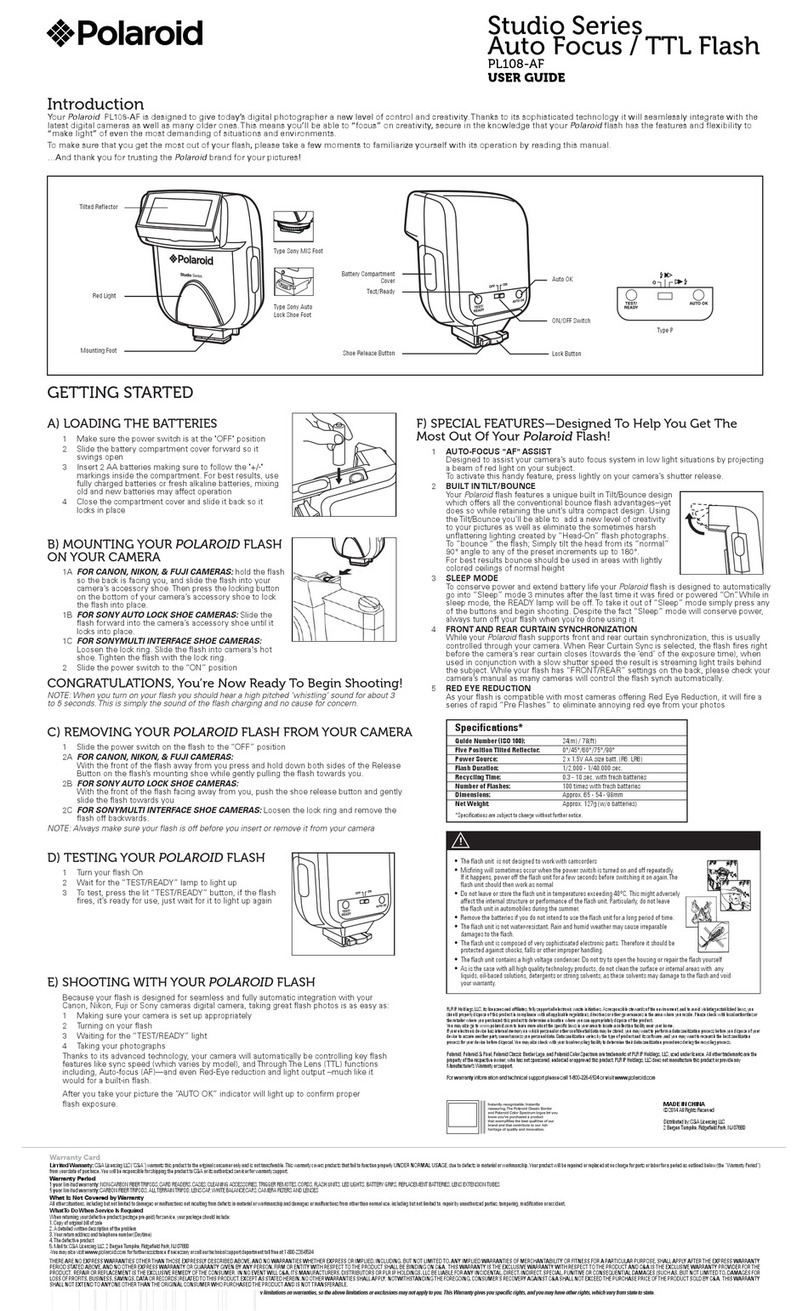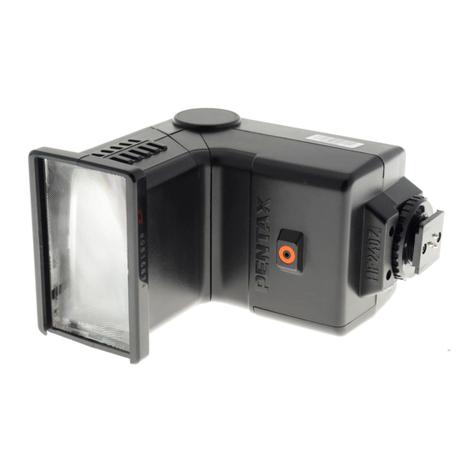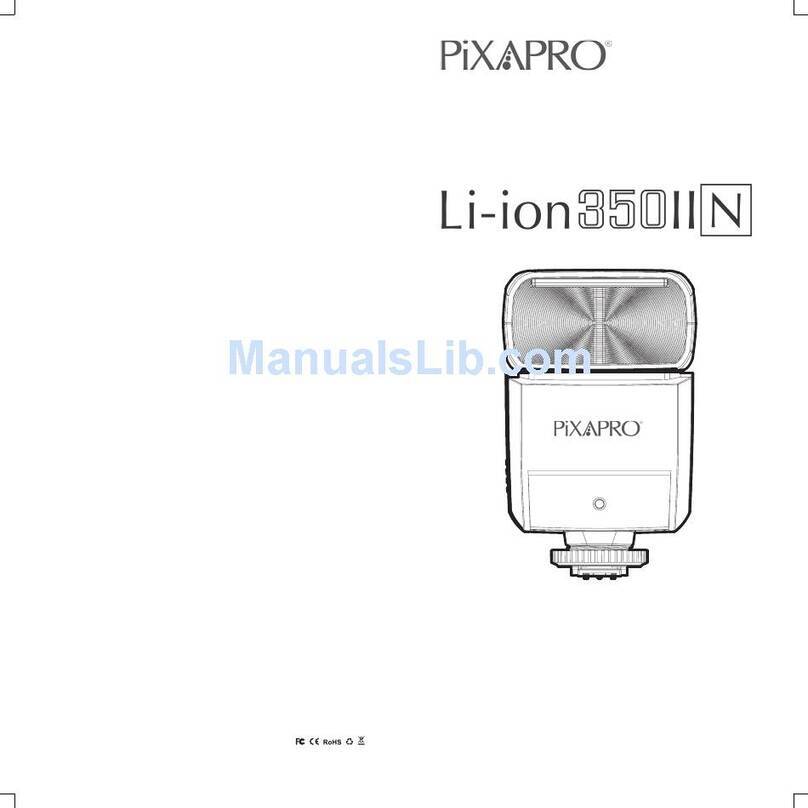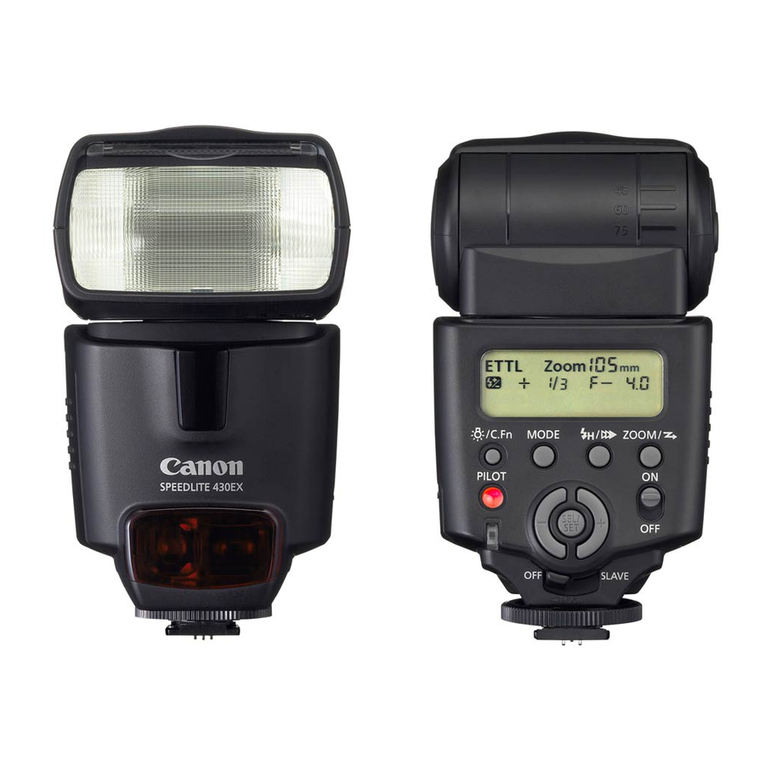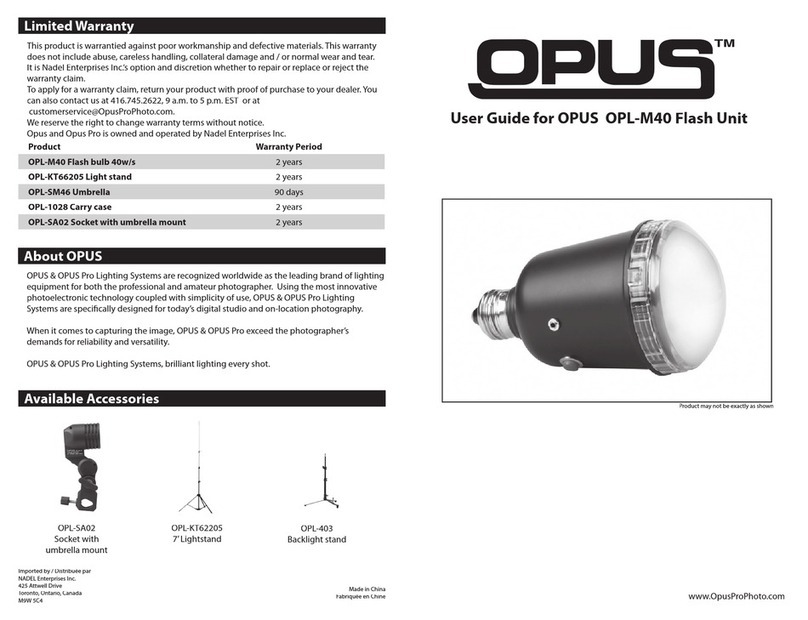
1
2
3
Press the <+/-> button. The
icon < > and flash exposure
compensation amount will be
highlighted on the LCD panel.
Press Set Button again to
confirm the setting.
Set the flash exposure
compensation amount.
●Turn the Select Dial to set
the amount.
●“0.3”means 1/3 step,
“0.7”means 2/3 step.
●To cancel the flash
exposure compensation, set
the amount to “+0”.
Attach the Camera Flash.
Secure the Camera Flash.
●Rotate the hotshoe
fixing buckle to the left
and insert the camera
flash into the camera's
hotshoe.
●Rotate the hotshoe
fixing buckle to the right
until it locks up.
Detach the Camera Flash.
●Press the button and
rotate the hotshoe
fixing buckle to the left
until it is loosened.
1
2
3
'MBTI.PEFˋ&55-"VUPGMBTI
"UUBDIJOHUPB$BNFSB
1PXFS.BOBHFNFOU
1
This flash has three flash modes: E-TTL, Manual (M), and Multi
(Stroboscopic). In E-TTL mode, the camera and the flash will work
together to calculate the correct exposure for the subject and the
background. In this mode, multiple TTL functions are available:
FEC, FEB, FEL, HSS, second curtain sync, modeling flash, control
with the camera’s menu screen.
* Press < MODE > Mode Selection Button and three flash modes will
display on the LCD panel one by one with each pressing.
ETTL Mode
Press < MODE > Mode Selection Button to enter E-TTL mode. The
LCD panel will display.
●Press the camera release button halfway to focus. The aperture
and effective flash range will be displayed in the viewfinder.
●When the shutter button is fully pressed, the flash will fire a
pre-flash that the camera will use to calculate exposure and flash
output the instant before the photo is taken.
FEC: Flash Exposure Compensation
With FEC function, this flash can adjust from -3 to +3 in 1/3rd
stops. It is useful in situations where minor adjusting of the TTL
system is needed based on the environment.
●Loading and Unloading the Battery
To unload the battery, hold
down the battery and press
compartment and push the
battery downwardly to take it
out.
2
Put 4 batteries in with the
correct polarity after opening
the battery compartment,
then close and push it to the
top.
Use ON/OFF Power Switch to power the flash unit on or off. Turn off
if it will not be used for an extended period of time. Setting as a
transmitter flash, it will turn the power off automatically after a
certain period (approx. 90 seconds) of idle use. Pressing the
camera shutter halfway or pressing any flash button will wake up
the flash unit. Setting as a receiver flash, it will enter sleep mode
after a certain period (adjustable, 60 minutes by default) of idle use.
Pressing any flash button will wake it up.
Disabling Auto Power Off function is recommended
when the flash is used off camera. (C.Fn-STBY, Page 55)
Receiver Auto Power Off Timer is set to 60 minutes by
default. Another option “30 minutes” is available. (55)
C.Fn
C.Fn
FEB: Flash Exposure Bracketing
You can take three flash shots while automatically changing the
flash output for each shot from -3 to +3 in 1/3rd stops. The camera
will record three images with different exposures: one exposed
according to camera calculations, one over-exposed and another
under-exposed. Over and under exposure amount is user
adjustable. This function helps get correct exposure especially in
shooting moving objects or when environmental lights are
complex.
FEC Setting:
- 31 - - 32 -
